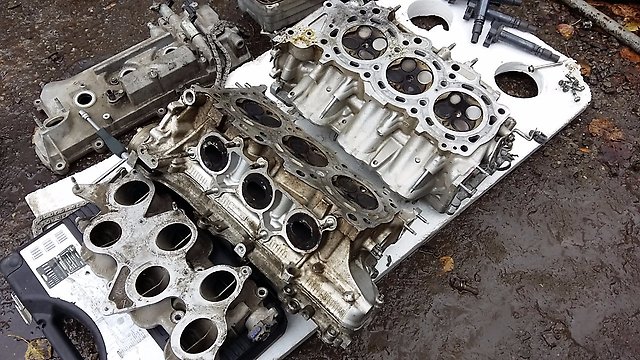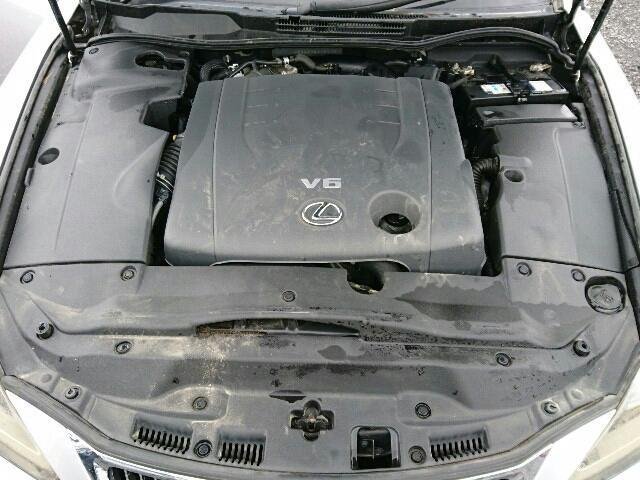
Toyota 4GR-FSE engine
Content
Even if you are not too aware of the latest in the automotive market, you have probably heard of the Japanese brand Toyota. The concern is famous all over the world as the creator of reliable cars and equally hardy engines. We will talk about one of the famous power units - 4GR-FSE - further. This engine deserves a separate review, so below we will get acquainted with its strengths and weaknesses, characteristics and much more, which affects the operation of the power unit of this series.
A bit of history
The history of the 2,5-liter 4GR engine began at the same time as the 3GR unit. A little later, the line was replenished with other versions of engines. The 4GR-FSE unit replaced the 1JZ-GE, appearing before the public as a smaller version of its predecessor, the 3GR-FSE. The aluminum cylinder block was fitted with a forged crankshaft with a piston stroke of 77 millimeters.

The cylinder diameter has decreased to 83 millimeters. Thus, the powerful 2,5-liter engine became the final option. The cylinder heads of the model in question are similar to those used in the 3GR-FSE unit. The 4GR is equipped with a direct fuel injection system. The engine has been produced to this day (the start of sales is 2003).
The most important - technical specifications
Getting acquainted with the motor of the model in question, it is by no means possible to bypass the characteristics.
| Years of production | From 2003 to present |
| Manufacturer | Plant Kentucky, USA |
| Cylinder head | Aluminum |
| Volume, l | 2,5 |
| Torque, Nm/rev. min. | 260/3800 |
| Power, hp with. / about. min. | 215/6400 |
| Environmental standards | EURO-4, EURO-5 |
| Piston stroke, mm | 77 |
| Compression ratio, bar | 12 |
| Cylinder diameter, mm. | 83 |
| fuel type | Gasoline, AI-95 |
| Number of valve cylinders per cylinder | 6 (4) |
| Construction scheme | V-shaped |
| Food | injection, injector |
| Lubrication standard | 0W-30, 5W-30, 5W-40 |
| Possibility of modernization | Yes, the potential is 300 liters. With. |
| Oil change interval, km | 7 000 - 9 000 |
| Fuel consumption liters per 100 km (city/highway/combined) | 12,5/7/9,1 |
| Engine resource, km. | 800 000 |
| The volume of oil channels, l. | 6,3 |
Weaknesses and strengths
Frequent problems and breakdowns, as well as the advantages of the engine, are of interest to a potential user no less than technical specifications. Let's start with the disadvantages - consider frequent breakdowns:
- There may be problems starting the engine in cold winter weather
- The throttle quickly becomes overgrown with dirt, which has a negative effect on idling
- Progressive oil consumption problem
- Clutches of the VVT-i phase control system make a crackling sound when starting the engine
- Small resource of the water pump and ignition coil
- There may be leaks in the rubber part of the oil line.
- Aluminum elements of the fuel system often burst during welding
- Recall company due to poor quality valve springs

Now it is worth pointing out the advantages and special qualities of the engine:
- Reinforced construction
- Increased power
- Smaller dimensions than previous model
- Impressive operational resource
- Reliability
Overhaul of engines of this model is required every 200 - 250 thousand kilometers. Timely and high-quality overhaul increases the life of the motor without significant breakdowns and resulting problems for the driver. It is curious that engine repair is possible with your own hands, but it is better to entrust the work to competent service station specialists.
Equipped vehicles
At first, the engines of the model in question were rarely installed on cars, but over time, 4GR-FSE began to be installed on cars of the Japanese brand Toyota. Now closer to the point - consider the models of the "Japanese", at one time equipped with this unit:
- Toyota crown
- Toyota Mark
- Lexus GS250 and IS250

Different models of Japanese cars were equipped with a motor in different years. It is worth noting that the engine model is often used to equip some crossovers and trucks. All thanks to a convenient and thoughtful concept.
Engine tuning
Tuning the Japanese 4GR-FSE engine is often irrational. It’s worth mentioning right away that initially the power 2,5-liter unit does not need re-equipment and various additions. However, if there is an irresistible desire to make it better, it's worth a try. Hardware modernization includes a number of activities, including the replacement of parts, the "scrolling" of the shafts, etc.
Reworking the engine will cost a considerable amount, so before you start tuning the engine, it is advisable to consider your decision. The only rational solution would be to install a compressor boost on the motor, that is, high-quality forcing. With effort and spending a lot of money, it will be possible to get an engine power of 320 hp. with., increase power and dynamics, as well as add youth to the unit.
Other
The price of an engine in the domestic market starts at $ 1, and depends on the condition of the engine, year of manufacture and wear. By visiting the pages of the site for the sale of auto parts and components, you will surely be able to find a suitable motor from the catalog. About what oil is better to use to improve engine performance, the opinions of car owners differ. Reviews about the operation of the engine on thematic forums are mostly positive. But there are negative responses, according to which the power unit has numerous disadvantages.

